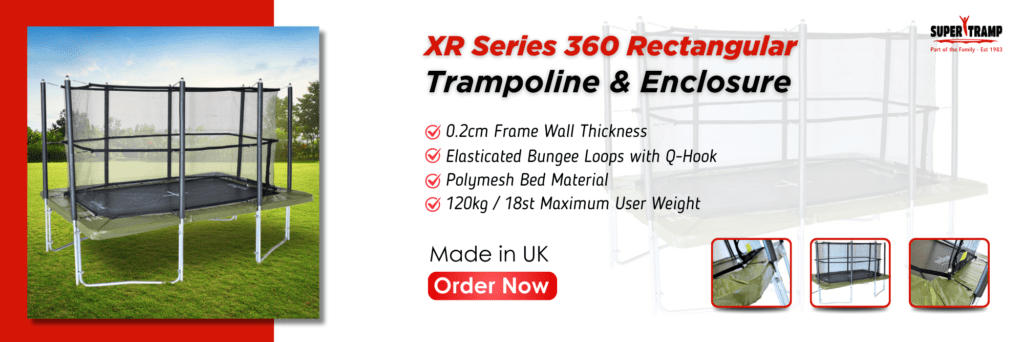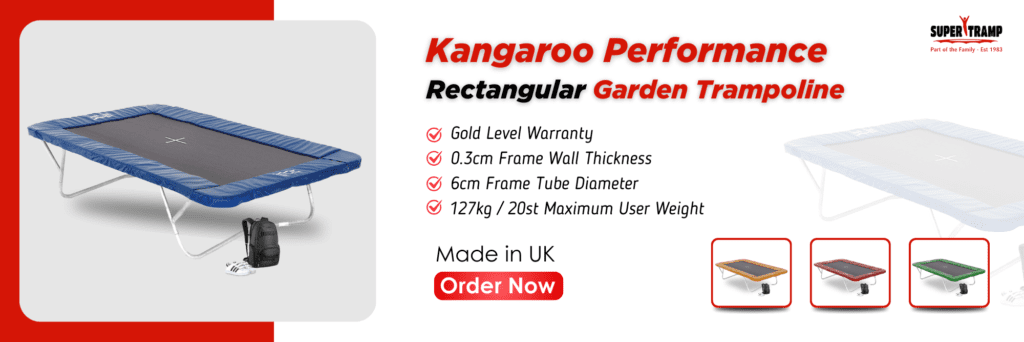After 9 months in space, Sunita William returned to Earth, not just with remarkable records like growing lettuce in zero gravity but also facing the challenge of adapting her body back to Earth’s gravity. Prolonged exposure to microgravity weakens muscles, reduces bone density, and affects cardiovascular health, making the journey back to normal life a tough battle.
Table of Contents
Toggle
Astronauts like Sunita W. undergo intense physical and mental training before going to space, but recovery after returning is equally demanding. To help astronauts regain strength and balance, NASA uses innovative therapies one of which is trampoline-based rehabilitation. Surprisingly, trampolines help restore muscle tone, improve coordination, and strengthen the heart, making them an essential part of post-space recovery.
Here’s the surprising part: Staying fit after 9 months in space requires the same principles that can help you stay fit as you age. Whether you’re in your 30s or approaching your 60s, maintaining balance, strength, and cardiovascular health is essential for a long, healthy life. And if a trampoline can help an astronaut like Sunita William recover after space travel, imagine what it can do for you!
This blog is a must-read if you’re curious about how to stay fit. Learn how trampoline therapy benefits astronauts and how adding it to your routine can help you stay strong, balanced, and energetic like Sunita Williams.
The Impact of Microgravity on Sunita Williams Body

Spending nine months in microgravity may seem intriguing, but the human body experiences significant changes in space. Without the force of Earth’s gravity, Sunita Williams’ body had to adjust to a completely different environment, which resulted in a ripple effect on her muscles, bones, heart, and balance. Understanding these changes makes it easier to appreciate why recovery after space travel is so challenging and why therapies like rectangle trampoline training play a vital role.
1. Fluid Redistribution
In microgravity, bodily fluids don’t stay where they should. Instead of settling in the lower body, they shift toward the head, causing puffiness in the face and pressure in the eyes. This fluid shift often leads to a “moon face” and increased cranial pressure, making astronauts feel congested and uncomfortable. When returning to Earth, the body has to re-learn how to manage fluid distribution, which is not an overnight process.
2. Muscle Atrophy and Bone Density Loss
Without the constant pull of gravity, muscles no longer need to work as hard to support the body. As a result, muscle atrophy sets in, leading to a significant loss of strength. At the same time, bones lose density, making them fragile and prone to fractures. Sunita William, like other astronauts, had to deal with this loss, requiring months of specialized therapy to regain her strength and restore bone health.
3. Cardiovascular Changes
In space, the heart doesn’t have to pump blood against gravity, which reduces its workload. Over time, this reduced demand weakens the heart, leading to a drop in cardiovascular efficiency. Astronauts returning to Earth often experience dizziness, fatigue, and reduced endurance. Sunita Williams post-mission routine included cardiovascular training to strengthen her heart and help her body readjust to Earth’s conditions.
4. Loss of Balance and Coordination
Microgravity also affects the vestibular system, which controls balance and spatial awareness. Astronauts lose their sense of orientation and struggle with coordination when they return. Even simple movements like walking become difficult, as their brains need to reprogram motor skills. Sunita William had to retrain her body to regain balance and coordination, highlighting how essential balance training is for recovery.
As Sunita Williams worked through these physical challenges, NASA relied on various therapies to aid her recovery, one of the most effective being trampoline-based rehabilitation. Let’s explore why fitness trampolines play a crucial role in helping astronauts bounce back after space travel.
Why NASA Relies on Trampolines for Astronauts Recovery

After returning from space, Sunita Williams didn’t just step back into her routine; her body had to relearn how to function in Earth’s gravity. To speed up this process, NASA incorporated physical therapy into her rehabilitation. Garden Trampolines aren’t just for fun; they play a crucial role in helping astronauts regain strength, balance, and cardiovascular health. Let’s explore how this low-impact yet powerful tool helped Sunita recover and how it can benefit anyone looking to improve their fitness.
1. Rebuilding Muscle Strength
Spending months in space weakens muscles due to lack of use, making post-mission strength training essential. Trampolines offer a gentle yet effective way to rebuild muscle strength. The bouncing motion activates multiple muscle groups, especially the legs, core, and back, without putting excessive stress on the joints. This low-impact approach allows astronauts like Sunita to regain their strength without risking injury, making trampoline therapy ideal for muscle recovery.
2. Restoring Mobility and Flexibility
Microgravity limits natural body movements, leading to stiffness and reduced flexibility. Trampoline exercises promote active movement, allowing muscles and joints to move through their full range of motion. This dynamic activity enhances flexibility and restores mobility by gradually increasing movement intensity. Sunita Williams routine included specific trampoline exercises to improve her agility and help her move freely again.
3. Regaining Balance and Coordination
After months in space, the brain struggles to control balance and coordination in gravity. Performance Trampoline exercises challenge the vestibular system, which helps astronauts retrain their sense of balance. The constant adjustments required while bouncing stimulate proprioception and motor control, helping Sunita William regain her coordination. Over time, these exercises restored her stability and improved her spatial awareness.
4. Strengthening a Weakened Heart
Microgravity reduces the heart’s workload, leading to a loss of cardiovascular efficiency. Trampoline workouts provide an excellent way to strengthen a weakened heart by improving circulation and increasing endurance. The repetitive bouncing movement boosts heart function without overexertion, allowing astronauts like Sunita to gradually rebuild their cardiovascular stamina.
By incorporating physical therapy, NASA ensured Sunita William regained her strength, balance, and endurance efficiently. But the benefits of trampolines aren’t limited to astronauts; anyone can use them to enhance their fitness. Let’s see how you can get fit like Sunita William!
Achieve Astronauts Fitness Levels Using a Trampoline

If you’re inspired by Sunita William’s strength and resilience, the good news is that you don’t need a space mission to achieve a similar level of fitness. Trampoline workouts offer a fun, low-impact way to build strength, improve balance, and boost heart health all while keeping your body engaged. Here’s a step-by-step guide to help you get started and stay consistent.
Begin with a Gentle Warm-up
- Before jumping into high-intensity movements, a proper warm-up is key to preventing injury.
- Spend 3-5 minutes performing light stretches and mobility exercises to loosen your joints and prepare your muscles.
- Warming up gradually increases blood flow and flexibility, ensuring your body is ready for the workout ahead.
Must try: Skipping rope to add extra intensity to your warm up routine.
2-Minute Jumping Jacks
- Once warmed up, start with 2 minutes of jumping jacks on the trampoline.
- This simple yet effective exercise gets your heart pumping and prepares your body for higher-intensity movements.
- The bounce of the trampoline reduces the impact on your knees and ankles, making it a safer option compared to jumping jacks on hard surfaces.
Recommended for you: Super Tramp 10 x 7 Trampoline
2-Minute Basic Jumps
- Follow the jumping jacks with basic jumps for 2 minutes.
- These controlled jumps engage your core, strengthen your legs, and improve overall stability.
- Focus on keeping your movements steady and controlled, allowing your body to adapt to the rhythm and build endurance.
- This is an excellent way to target multiple muscle groups while maintaining balance.
10-Minute Cardio Session
- Now that your body is warmed up and activated, increase the intensity with a 10-minute trampoline cardio session.
- This could include a mix of fast-paced bounces, jogging in place, or high knees.
- Cardiovascular exercises on a trampoline improve heart health, increase stamina, and enhance lung capacity all without putting undue stress on your joints.
Note: Make sure to always use trampoline socks before you start jumping on trampoline to make your workout routine safe.
Add Resistance Band Training
- To finish strong, incorporate resistance band training while bouncing.
- Use light to moderate resistance bands to add an extra challenge to your arms and legs.
- This combination not only builds strength but also enhances balance and coordination, mimicking the type of functional training that helped Sunita William regain control of her body after her space mission.
By following this routine consistently, you’ll build strength, improve balance, and boost endurance just like Sunita William.
Conclusion
Sunita Williams’ inspiring journey back to normal life after 9 months in space shows just how powerful trampoline therapy can be. We’ve explored how microgravity affects the body weakening muscles, reducing bone density, and impacting cardiovascular health. We also discussed how NASA uses trampoline-based rehabilitation to help astronauts like Sunita rebuild strength, restore mobility, regain balance, and strengthen their hearts after returning to Earth.
The best part? You don’t have to be an astronaut to enjoy these benefits. Trampoline exercises provide a fun, low-impact, and highly effective way to improve muscle strength, balance, and cardiovascular endurance.
Ready to take your fitness to the next level? Start incorporating trampoline exercises into your routine today and experience the same strength, balance, and endurance that helped Sunita William bounce back stronger. Invest in your health now, get a trampoline and start your journey toward a fitter, healthier you!
FAQ's
How many hours a day do astronauts have to exercise?
Astronauts exercise for about 2 hours daily to prevent muscle and bone loss caused by microgravity.
What did Sunita William eat?
Sunita Williams followed a balanced diet of freeze-dried fruits, protein-rich meals, and space-safe snacks to stay nourished during her mission.
What kind of training did Sunita Williams undergo?
She underwent intense physical, mental, and technical training, including simulations, survival drills, and endurance tests to prepare for space.
What was the biggest challenge for Sunita Williams?
Re-adapting to Earth’s gravity after months in microgravity was one of her biggest challenges, requiring extensive physical therapy.
What do astronauts do to stay fit?
They use specialized equipment like treadmills, resistance machines, and stationary bikes to maintain strength and cardiovascular health.





